| Scientific name
|
Name
|
Description
|
Picture
|
| Calendula officinalis
|
Marigold
|
Also named calendula, has a long history of use in treating wounds and soothing skin
|
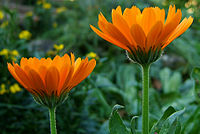
|
| Cannabis
|
Hemp, Cannabis, Marijuana, Indian hemp, Ganja
|
Used worldwide since ancient times as treatment for various conditions and ailments including pain, inflammation, gastrointestinal issues such as IBS, muscle relaxation, anxiety, Alzheimer's and dementia, ADHD, autism, cancer, cerebral palsy, recurring headaches, Crohn's disease, depression, epilepsy, glaucoma, insomnia, and neuropathy among others.
|
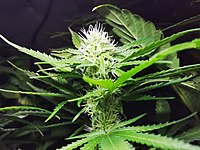
|
| Capsicum annuum
|
Cayenne
|
Type of chili that has been used as both food and medicine for thousands of years. Uses have included reducing pain and swelling, lowering triglyceride and cholesterol levels and fighting viruses and harmful bacteria, due to high levels of Vitamin C.
|
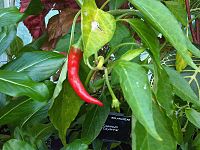
|
| Capsicum frutescens
|
Chili
|
Its active ingredient, capsaicine, is the basic of commercial pain-relief ointments in Western medicine. The low incidence of heart attack in Thais may be related to capsaicine's fibronolytic action (dissolving blood clots).
|

|
| Carica papaya
|
Papaya
|
Used for treating wounds and stomach troubles.
|
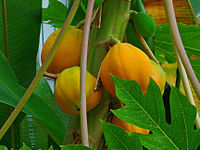
|
| Cassia occidentalis
|
Coffee senna
|
Used in a wide variety of roles in traditional medicine, including in particular as a broad-spectrum internal and external antimicrobial, for liver disorders, for intestinal worms and other parasites and as an immune-system stimulant.
|

|
| Catha edulis
|
Khat
|
Mild stimulant used for thousands of years in Yemen, and is banned today in many countries. Contains the amphetamine-like substance cathinone.
|
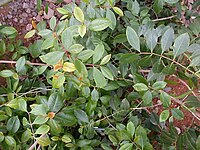
|
| Cayaponia espelina
|
São Caetano melon
|
It is a diuretic and aid in the treatment of diarrhea and syphilis.
|
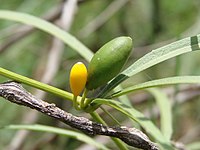
|
| Centaurea cyanus
|
Cornflower
|
In herbalism, a decoction of cornflower is effective in treating conjunctivitis and as a wash for tired eyes.
|
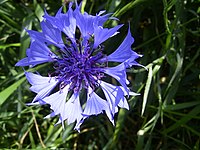
|
| Chrysopogon zizanioides
|
Vetiver
|
Used for skin care.
|
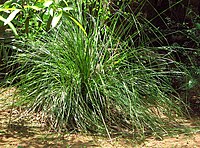
|
| Cinchona spec.
|
Cinchona
|
Genus of about 38 species of trees whose bark is a source of alkaloids, including quinine. Its use as a febrifuge was first popularized in the 17th century by Peruvian Jesuits.
|

|
| Citrus × aurantium
|
Bitter orange
|
Used in traditional Chinese medicine and by indigenous peoples of the Amazon for nausea, indigestion and constipation.
|

|
| Citrus limon
|
Lemon
|
Along with other citruses, it has a long history of use in Chinese and Indian traditional medicine. In contemporary use, honey and lemon is common for treating coughs and sore throat.
|

|
| Citrus trifoliata
|
Trifoliate orange, bitter orange
|
Fruits of Citrus trifoliata are widely used in Oriental medicine as a treatment for allergic inflammation.
|

|
| Cissampelos pareira
|
Velvetleaf
|
Used for a wide variety of conditions.
|
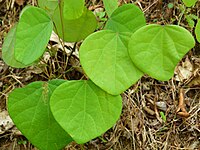
|
| Cnicus benedictus
|
Blessed thistle
|
Used during the Middle Ages to treat bubonic plague. In modern times, herbal teas made from blessed thistle are used for loss of appetite, indigestion and other purposes.
|
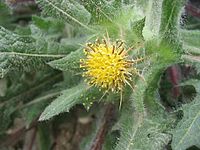
|
| Crataegus monogyna and Crataegus laevigata
|
Hawthorn
|
Fruit has been used for centuries for heart disease. Other uses include digestive and kidney related problems.
|

|
| Curcuma longa
|
Turmeric
|
Spice that lends its distinctive yellow color to Indian curries, has long been used in Ayurvedic and traditional Chinese medicine to aid digestion and liver function, relieve arthritis pain, and regulate menstruation.
|
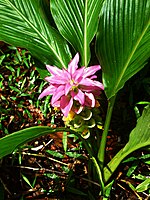
|
| Cypripedium parviflorum
|
Yellow lady's slipper
|
The Cypripedium species have been used in native remedies for dermatitis, tooth aches, anxiety, headaches, as an antispasmodic, stimulant and sedative. However, the preferred species for use are Cyp. parviflorum and Cyp.acaule, used as topical applications or tea.
|
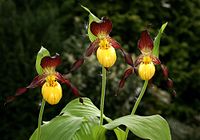
|



















Comments
Post a Comment